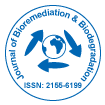Challenges and Advances in the Biodegradation and Bioremediation of Hydrocarbons in Extreme Environments
*Corresponding Author:Received Date: Jan 01, 2025 / Published Date: Jan 30, 2025
Copyright: © 0 . This is an open-access article distributed under the terms of the Creative Commons Attribution License, which permits unrestricted use, distribution, and reproduction in any medium, provided the original author and source are credited.
Abstract
The biodegradation and bioremediation of hydrocarbons in extreme environments, such as those with high B i o temperatures, salinity, acidity, or pressure, present significant challenges to environmental management. Hydrocarbon pollution in these environments, resulting from oil spills, industrial discharges, or natural seepages, can severely impact biodiversity and ecosystem health. However, certain extremophilic microorganisms have evolved specialized metabolic pathways that enable them to degrade hydrocarbons in these harsh conditions. This review examines recent advancements in our understanding of hydrocarbon biodegradation in extreme environments, focusing on the microbial communities and enzymes involved in these processes. It also explores bioremediation strategies utilizing extremophiles, including bioaugmentation, biostimulation, and the application of engineered microorganisms. Despite the promising potential of extremophiles for hydrocarbon degradation, challenges related to scalability, ecological stability, and environmental constraints remain. This article provides an overview of the current state of research and suggests potential directions for advancing the bioremediation of hydrocarbons in extreme environments.

 Spanish
Spanish  Chinese
Chinese  Russian
Russian  German
German  French
French  Japanese
Japanese  Portuguese
Portuguese  Hindi
Hindi 
